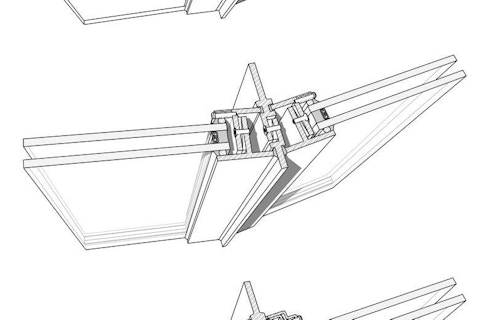No timid steps: Be bold and generous!
If we keep building the way we’ve always built, our buildings will keep performing the way they’ve always performed. Significant changes in energy performance will obviously require significant changes in construction practices, but the design and construction industries are notoriously resistant to change, putting them on a collision course with the many cities, states, and provinces that are moving ahead of national standards in keeping with declared intentions to dramatically cut their carbon emissions this decade.
...the only places you’ll find high-performance buildings being consistently constructed at massive scale are those places where it’s the only way to get a building permit.
To make this construction change less painful, it’s important for a whole city to go through it together. If one project team decides to go it alone, perhaps aiming for LEED Platinum or Passive House, that building becomes a special-order, high-risk project where everyone involved is on a steep learning curve and the supply chain is clueless, making it slow and expensive. If on the other hand a city announces that starting, say, six months from today, every project must incorporate a range of high-performance features, the landscape changes suddenly.
The energy code is our primary tool for making this technical (and cultural) transition. It harnesses the considerable power of competition, as engineers, architects, builders, and developers all scramble to attract market share under the new rules. Those same entities that recently worked to defeat the new energy code are now focused on developing and promoting their technical prowess. Suppliers reduce prices as the formerly special-order equipment becomes standard issue, and subcontractors work out more efficient installation techniques. To be clear, the first project or two under the new regime is usually difficult and expensive, as everyone retools and learns new skills. That said, they’re all playing on a level field, and a higher-level field at that. Here in Seattle, we’ve seen this process play out over many code cycles as we’ve absorbed air barrier testing, DOAS mechanical systems, continuous insulation, and many other energy saving measures. These provisions all seem old hat to our local trades by now, and our most recent requirements for heat pump space heating and water heating will most likely follow that same trajectory.
There are numerous possibilities for smoothing the transition for our stakeholders. Seattle created a delayed implementation date for these new heat pump provisions, giving design teams and contractors additional time to adjust. Our regional utility consortium is developing a standard specification for central heat pump water heating systems, and Ecotope, a progressive local engineering firm, has created a free online tool for sizing these systems. The building department is developing an online “Tip” explaining how to comply with the new heat pump rules, and Seattle City Light, our municipal utility, recently sponsored a series of heat pump webinars attended by hundreds of people and which they later posted online. This flurry of activity is happening now only because the technology is required in the new code, meaning that everybody has to pay attention.
It’s the essence of the Seattle approach: move forward confidently with the most impactful code provisions available and then scramble to help all the affected parties make the transition. This steadily strengthening energy code is by no means popular among developers and builders, but with steadfast political support and a top-notch stable of local professionals, Seattle continues to progress towards becoming a zero-carbon society.
Across the entire world, the only places you’ll find high-performance buildings being consistently constructed at massive scale are those places where it’s the only way to get a building permit. The entire industry, and the individuals impacted, adjust surprisingly quickly and in fact are intensely proud of their projects’ improved energy performance. While hundreds of cities have signed on to the Paris Climate Accords, nothing will happen until we step up and take decisive action. If we seriously intend to meet those Paris targets, we must take the bold and decisive steps forward today, energetically assist all those impacted through that transition, and roll right into preparing the next step.

Duane Jonlin, FAIA
Energy Code and Energy Conservation Advisor
City of Seattle, Department of Construction and Inspections
Duane Jonlin, FAIA, is the Energy Code and Energy Conservation Advisor for the Seattle Department of Construction and Inspections.
Looking for something specific?
Search our extensive library.
FTI’s SKINS email is the central source for the latest in building skin trends and research.
All emails include an unsubscribe link. You may opt out at any time. See our privacy policy.









